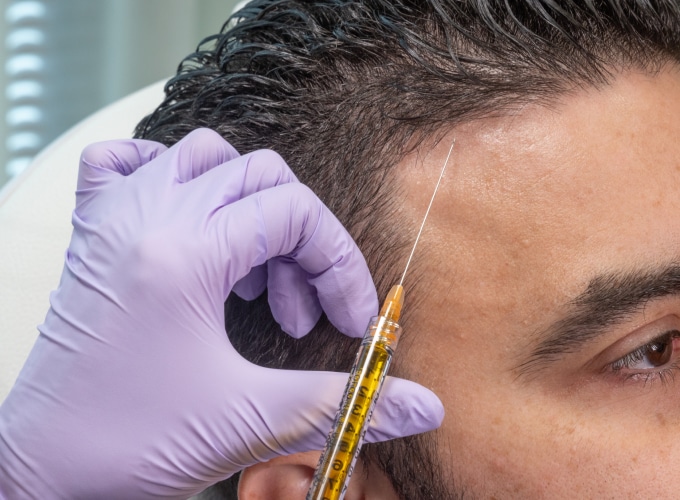What are the negatives of PRP?
PRP Hair Treatment in Dubai
Platelet-rich plasma (PRP) therapy has become a popular treatment for hair loss. By using a patient’s own platelets to stimulate hair follicles, this procedure aims to improve hair density and growth. PRP Hair Treatment in Dubai is minimally invasive and leverages the body’s natural healing mechanisms to achieve visible results.
How PRP Works on Hair Follicles
PRP works by injecting concentrated platelets into the scalp, targeting areas experiencing thinning or hair loss. These platelets release growth factors that promote tissue repair and stimulate dormant hair follicles. This process helps encourage new hair growth and strengthens existing strands over time.
Timeline for PRP Results
The effects of PRP treatment are not immediate. Most patients begin to notice changes within three to six months after the initial sessions. Visible improvements, such as thicker and stronger hair, may continue to develop over several months as the treatment progresses. Multiple sessions are often required for optimal outcomes.

Factors Influencing Results
The effectiveness of PRP depends on several factors, including the patient’s overall health, the extent of hair loss, and consistency with the treatment plan. Individuals with early-stage hair thinning often experience better results than those with advanced hair loss. Following professional recommendations ensures the best outcomes.
Benefits of PRP for Hair Restoration
PRP offers numerous benefits for those experiencing hair loss. The treatment is natural, as it uses the patient’s own blood, reducing the risk of adverse reactions. It is also minimally invasive, with no downtime required, making it a convenient option for many. Over time, PRP helps improve hair thickness, texture, and overall scalp health.
Importance of Multiple Sessions
PRP therapy typically requires multiple sessions to achieve desired results. Sessions are often spaced a few weeks apart to allow the scalp to respond to the treatment. Maintenance treatments may also be recommended to sustain the results over the long term.
Post-Treatment Care
Proper aftercare is crucial for maximizing the effectiveness of PRP therapy. Patients are usually advised to avoid direct sun exposure, refrain from vigorous physical activity, and follow any specific instructions provided by their practitioner. These steps help ensure a smoother recovery and enhance treatment outcomes.
FAQs
How soon can I expect results from PRP for hair? Most patients notice changes within three to six months, with continued improvements over time.
Is PRP effective for all types of hair loss? PRP is most effective for individuals in the early stages of hair thinning. Advanced hair loss may require other treatments.
How many PRP sessions are needed for visible results? Typically, three to six sessions are recommended, followed by maintenance treatments.
Are the results of PRP permanent? While PRP can produce long-lasting effects, maintenance treatments are often required to sustain results.
Does PRP work for everyone? Results vary based on factors like overall health, the extent of hair loss, and adherence to the treatment plan.
What are the side effects of PRP for hair? Side effects are minimal and may include temporary redness, swelling, or sensitivity at the injection sites.
Can PRP improve hair texture? Yes, PRP often improves hair texture and thickness in addition to promoting growth.
How long is the recovery period after PRP treatment? PRP has minimal downtime, and most patients can resume normal activities immediately after the procedure.
Final Thoughts
PRP therapy is a promising solution for hair loss, offering natural and effective results over time. By stimulating hair follicles and improving scalp health, PRP helps patients achieve thicker, healthier hair. For the best results, a consistent treatment plan and adherence to professional guidance are essential. This innovative approach to hair restoration continues to gain popularity as a reliable option for those looking to enhance their hair gr

 clinic835
clinic835